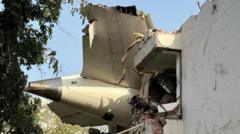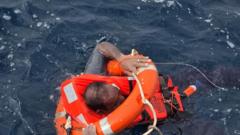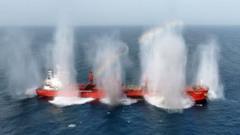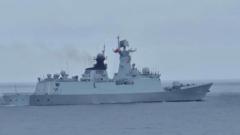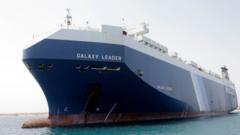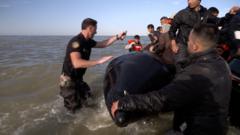The U.S.S. Harry S. Truman, a Nimitz-class carrier, struck a bulk carrier off the coast of Egypt, amid ongoing regional operations. Fortunately, there were no injuries reported, and safety protocols will be reviewed.
# U.S. Navy Aircraft Carrier Collides with Merchant Ship Near Egypt: Investigation Underway

# U.S. Navy Aircraft Carrier Collides with Merchant Ship Near Egypt: Investigation Underway
A U.S. Navy aircraft carrier has collided with a commercial vessel in the Mediterranean, prompting an investigation into safety procedures.
In a significant maritime incident, the U.S.S. Harry S. Truman, a Nimitz-class aircraft carrier, collided with a merchant ship in the Mediterranean near Port Said, Egypt, on Wednesday night, Navy officials confirmed. Assigned to U.S. Central Command and recently involved in military operations against Houthi forces in Yemen, the carrier was sailing when the incident occurred.
Despite the alarming nature of the collision, reports indicate there were no injuries on board either vessel, and the Truman's advanced propulsion systems, reliant on two nuclear reactors, remained in stable condition. The Navy has announced that an investigation into the circumstances surrounding the crash is currently underway.
The merchant vessel, identified as the Besiktas-M, is a bulk carrier built in 2003 and registered under the Panamanian flag, making its way from Jordan's port of Aqaba to Romania's Constanta. According to Vessel Tracker, the crew of the Besiktas-M also reported no injuries.
This collision near Port Said marks an unfortunate deviation from a recent period of relative safety for U.S. Navy ships interacting with commercial traffic. The last notable incidents occurred in 2017, when two crashes involving Navy ships in the Western Pacific resulted in the loss of 17 sailors due to crew errors labeled as "avoidable." The aftermath of those tragedies saw significant changes in the Navy’s operational leadership to bolster maritime safety.
The Navy’s proactive inspection following those incidents has raised hopes that improved safety measures would prevent future accidents, making the collision involving the U.S.S. Harry S. Truman a cause for concern and a reminder of the importance of stringent maritime protocols.
As the investigation unfolds, it will be crucial to assess the current safety measures in place to protect both military and commercial vessels operating in contested waters.




